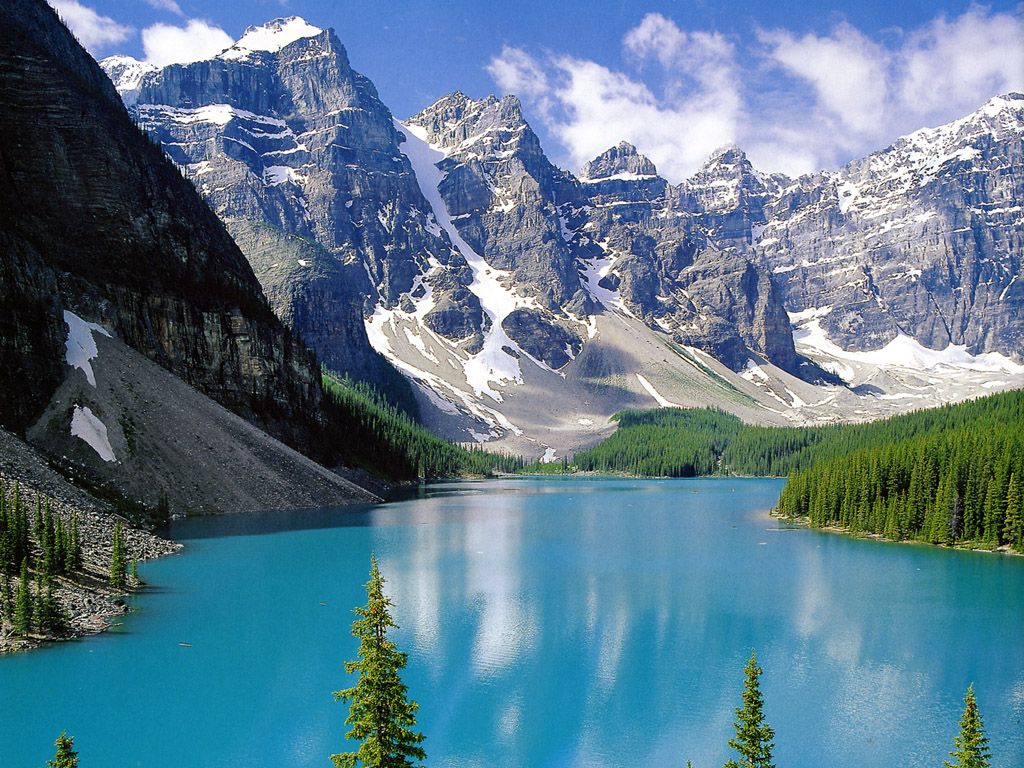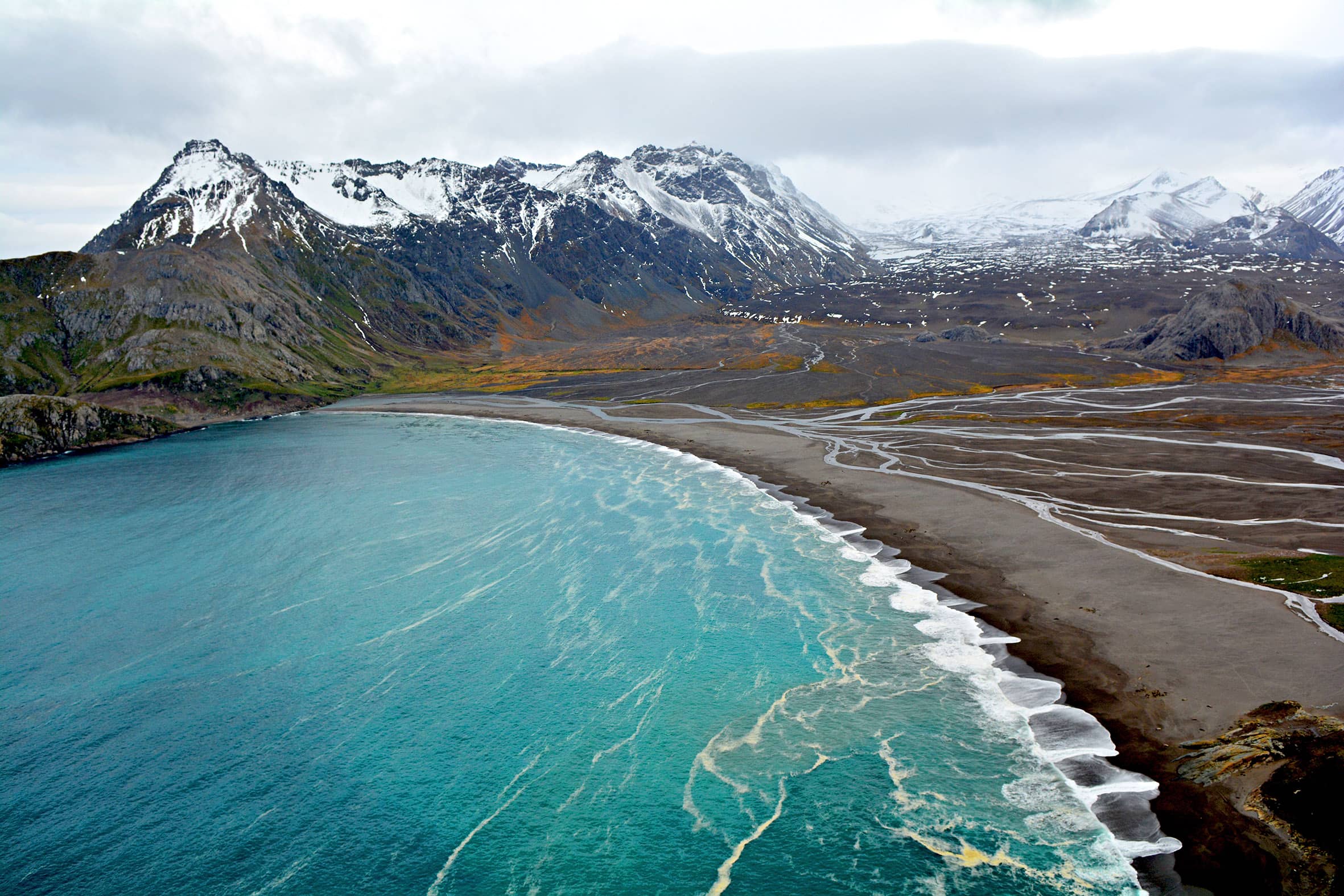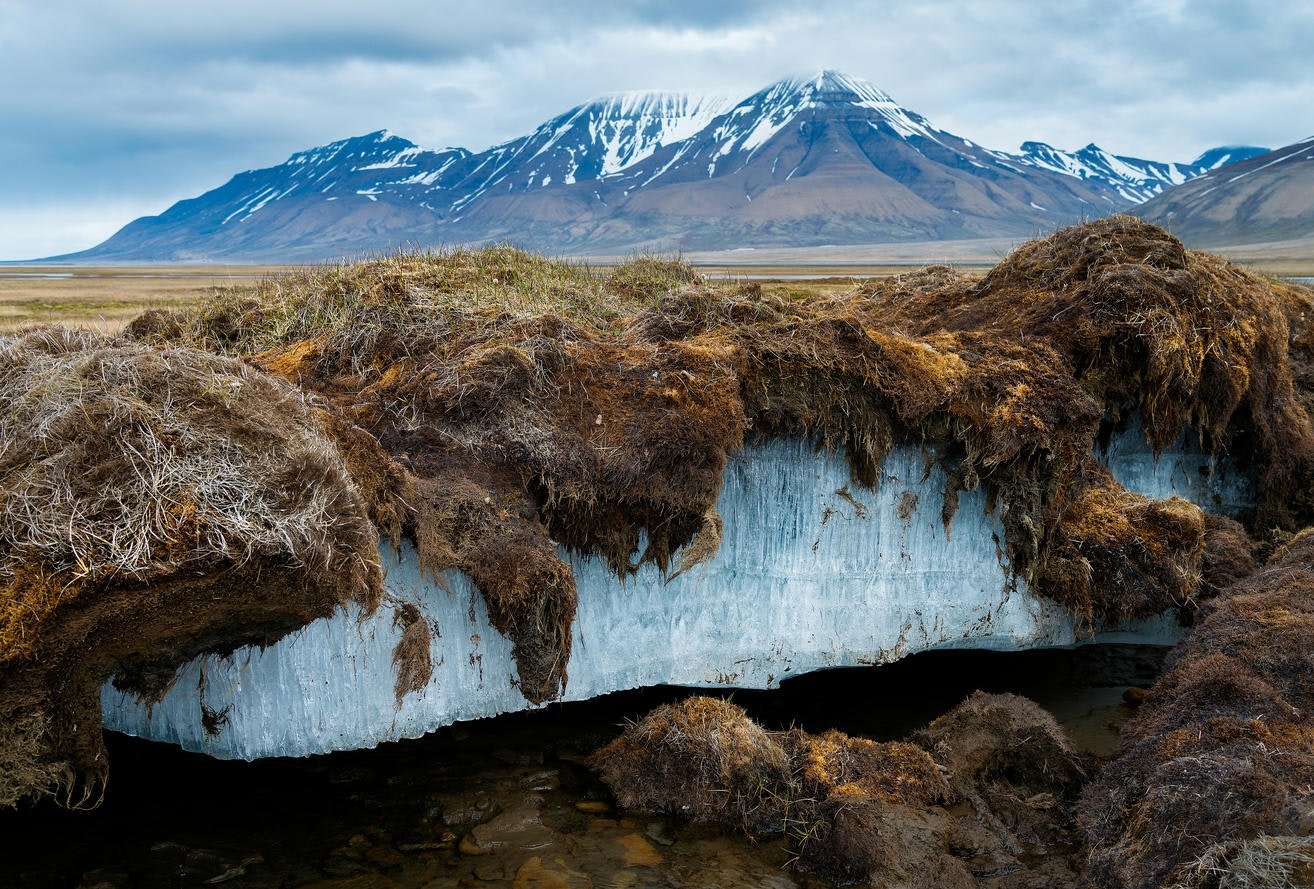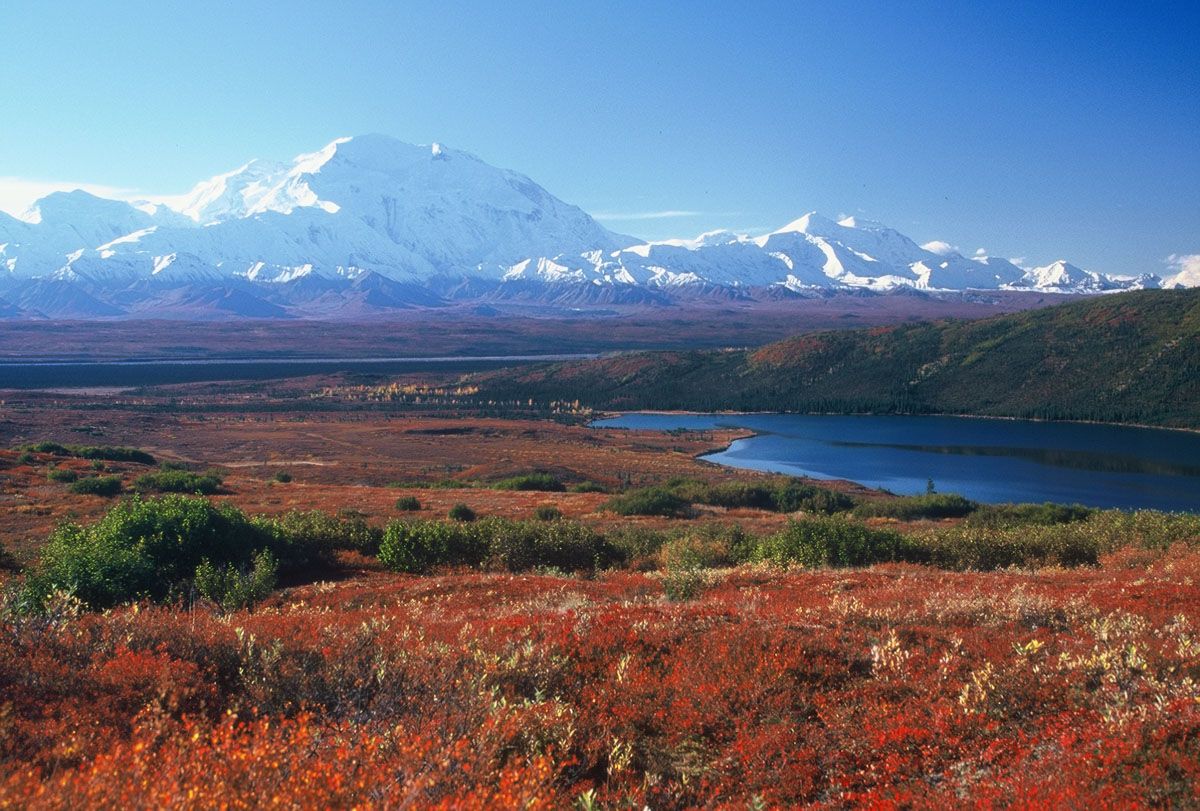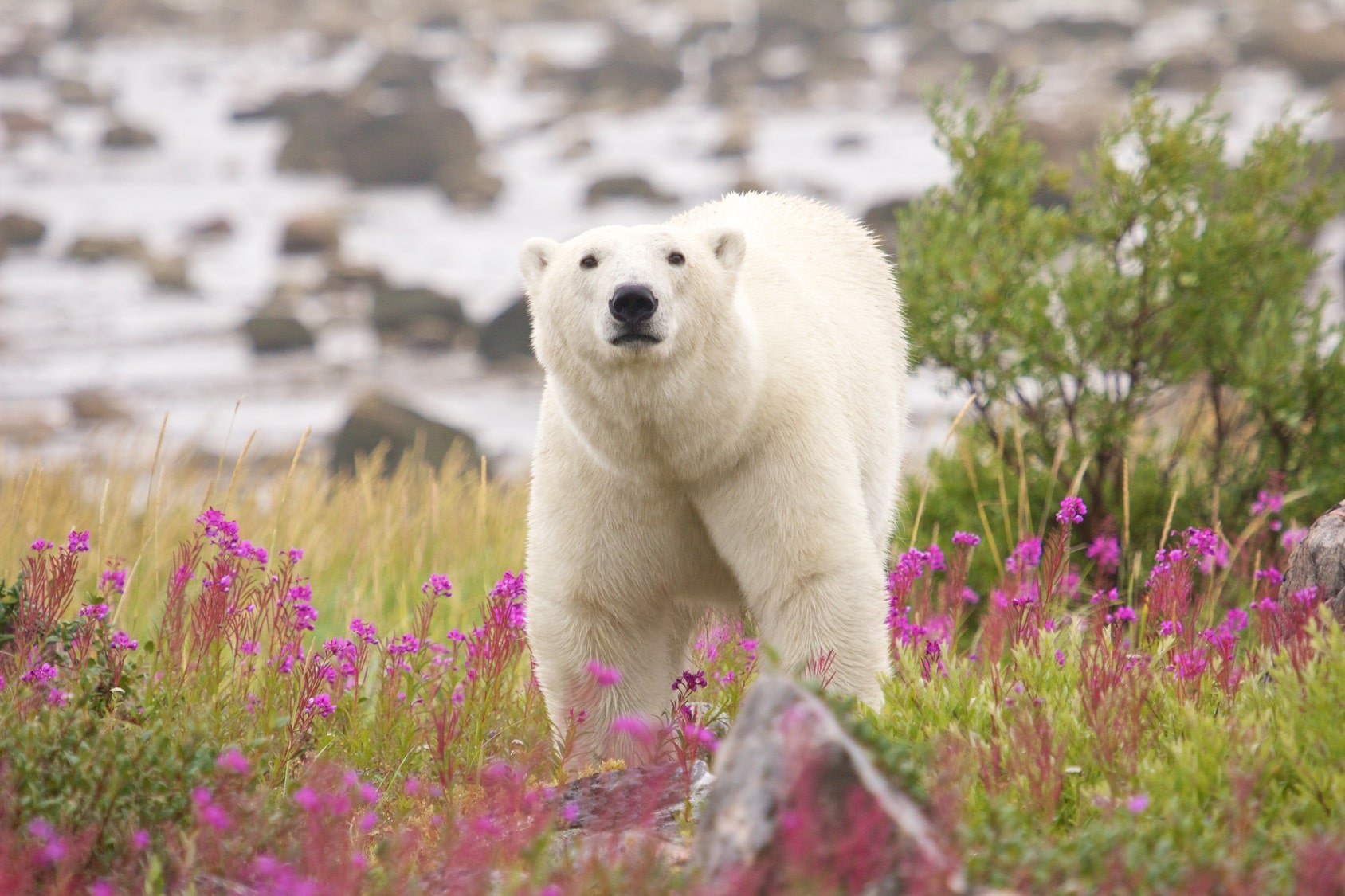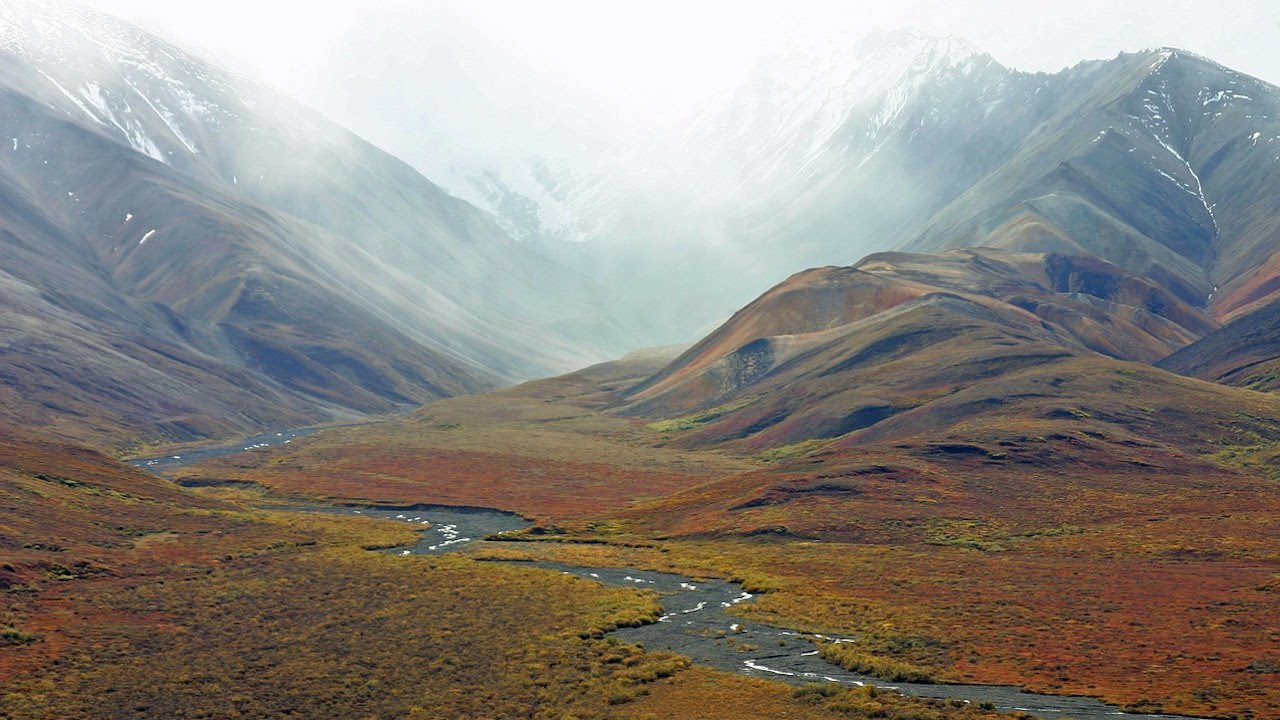The tundra is a bioclimatic landscape with very cold temperatures, with lands that do not have much vegetation and the little that can be found is summarized in lichens, herbs, mosses and low shrubs. If you want to know more about the tundra features, we invite you to continue reading this post.

What is the Tundra?
The tundras are almost a polar desert, in which the climate is extremely cold and there is little or almost no type of rain, in the tundra there are strong gales and the soil lacks nutrients, which is why the vegetation is of a simple texture, there is little biological diversity with a landscape where the only thing that can be observed is ice and snow.
All this means that tundras are a kind of treeless plains, these can be located primarily in the northern hemisphere, approximately along the coasts of the Atlantic Ocean and in the southern hemisphere in Antarctica.
Types of Tundra
There are 3 main types of tundras with different characteristics, but the most important difference is where they form. These are the following:
- Alpina: Alpine tundras can be found in mountains anywhere in the world, at heights where there are no trees at all, and where the soils are generally very well drained.
- Arctic: Arctic tundras can be found in the northern hemisphere, below the arctic ice sheet and can extend to the edge of the coniferous forests of the taiga.
- Antarctica: On the other hand, the Antarctic tundra is the least common and many times even difficult to find, but these are located on some islands, such as the Kerguelen, South Georgia and South Sandwich.
Tundra Characteristics
Since this is a very interesting and attractive type of ecosystem, with cold and sparsely populated places, then this causes the tundra features are very particular, and extremely difficult to find in other parts of the world.
Location and Extent of Tundra
Alpine tundra is located in the tropical and subtropical mountains of Eurasia, and part of North America. Now, the arctic tundra is located in the northern hemisphere and includes Alaska, Siberia, northern Canada, southern Greenland and the arctic coast of Europe.
On the other hand, the Antarctic tundra is located in South America, more specifically in Chile and Argentina, as well as in the subantarctic islands, such as Kerguelen, the Malvinas, South Georgia and small areas of the Antarctic coast.
Daylight Variation in the Tundra
The arctic tundra receives little sunlight, because depending on the dimensions of the place, the sun will hide for a long time and can be up to two months, a period in which the tundra will be in complete darkness during and remain hidden, however, during the summer time it does receive sunlight, but its intensity is low.
Vegetation Structure
The period when the sun rises in the tundras, only the surface of the ground can thaw, so this is a big reason why only really hardy plants can grow. In this case, the vegetation that occurs in the tundra is made up mainly of shrubs and grasses.
Soil and Permafrost
The soil of the tundras is of the gley type, that is, it is rich in ferrous iron, which generally develops in the flood plains. The subsoil tends to remain frozen throughout the year, forming permafrost that waterproofs the ground, causing swamps, puddles and lagoons to form.
Gley type floor
The gley-type soil has a large percentage of ferrous iron, which is why its color is grey-green. Its texture in the tundra is polygons, cracks filled with water and mounds of peat, this is due to the erosive effects of ice.
Permafrost soil
Permafrost is the layer of ground that remains permanently frozen, it is not always covered by snow, but it remains frozen at all times. Permafrost is a carbon sink and this in turn is a major threat, because if the temperature rises, then the permafrost will thaw and this in turn will start a chain reaction that can cause a lot of damage to the planet.
the peat
Peat is more than a third of charcoal, spongy and light that can be found in the soil of the tundra, this occurs through the decomposition of organic waste in the soil when it is flooded, in the tundra we find swampy areas very large, which are the ones that create a large part of the mosaic of this territory.
Tundra Climate
The climate of the tundra remains below zero for almost the rest of the year, approximately 6 to 10 months, all of this motivated by the fact that it is very close to the poles. In the arctic zone, the tundra temperature It is from -12° to -6° C approximately, but during the winter time it is -34° C and during the summer time it reaches up to -3° C.
In the alpine tundras the temperatures can feel somewhat warmer, since during the summer it can be around 10° C, however, during the nights they drop several degrees below zero. Winters in the tundra can be extremely cold, dark, long and dry, so much so that temperatures here can be unimaginable, almost -70°C.
During most of the year there is snowfall, during the summer the weather can be a little less icy and be between -28 ° C, at this time there can also be some very light rainfall, rains almost most of the time they fall in the form of snow. In the case of the mountains or summits, during the summer it could reach 10° C, and during the nights they are below zero.
tundra flora
The tundra lacks trees due to the existing temperatures in that place, however, we can find some types of Flowering trees or other types of plants, of which there are approximately 400 different types, usually these are small, coupled with climatic conditions.
It has other conditions that do not allow the growth of large trees, such as lack of rain, lack of decomposition of organic substances, which would produce a soil rich in nutrients, which are very necessary for the growth of vegetation, which grows very distanced from each other.
In the arctic tundra and subarctic tundra there are approximately 1.700 species of plants, in which we can find grasses and liverworts. The most normal tundra vegetation are mosses, which only reach about 10 centimeters, which means that they are very low and are close to the ground, which allows them to tolerate strong winds without being uprooted and during the season winter they are sheltered under the snow that covers them.
In the tundra we could also get a type of dwarf shrub, such as lichens, in addition to heaths, sedges. Cushion plants also inhabit these, which are located between the rocky depressions, where they are covered by strong gales and get in this place an environment which is a little warmer.
However, in the tundra some plants are born that grow with very little or no amount of land and during the summer season, it is filled with many very small alpine flowers, which fill that dark landscape with life and color; and turns it into a lush green landscape with moss, lichens, sedges, grasses and dwarf shrubs.
Vegetation Characteristics
The existing plants in the tundra are generally very small, tall, this for some main reasons, characteristic and very important in these areas:
- The soil of the tundra does not contain any type of nutrients.
- Plants that grow in the tundra, due to their short stature, find it very easy to absorb heat from the dark ground, which helps prevent them from freezing.
- The smaller the tundra plants, the more protected they are from the cold and strong winds, and their roots are so short that they grow lopsided, since they cannot penetrate the permafrost.
- They usually develop in groups, which allows them to protect each other against the cold, and the particles of ice and snow that are dragged by strong winds.
- Tundra vegetation is made up of perennial herbs, warblers, lichens, mosses, and dwarf shrubs.
https://www.youtube.com/watch?v=F6fPzneE8So
Most common plant species in the Tundra
- Yagel Mosses: Yagel moss is a type of lichen native to the tundra, these can live for a long period of more than 500 years.
- Black Raven: It has a type of berries with a sweet taste, this small plant also contains medicinal properties.
- lichen jelly: It is the largest lichen that lives in the tundra, it can measure between 10 and 15 centimeters.
- lingonberry: The Lingonberry is a very small plant, they also have sweet berries.
- Dwarf Birch: It is a plant that can reach 70 centimeters in height, which is why it is considered a kind of shrub.
Tundra Wildlife
The tundra animals they are physically accustomed to living in this type of environment, these species have long fur, they also have thick covers of fat under the skin that protects them from the cold. The color in some of these animals is white and it helps them to hide in the snow, in this way they can escape from predators more easily.
Among the animals that we can find in the tundra, are reindeer, caribou, hares, arctic foxes, Wolves, hawks, musk oxen, polar bears and several species of birds, seals and sea lions also live on the coasts.
Some species inhabit the arctic tundra such as wolves, arctic foxes, polar bears, loons, seagulls, arctic bumblebees, moths, black flies, lemmings, squirrels, arctic hares, caribou, arvicolins, ravens, hawks, and grasshoppers. While the fauna of the alpine tundra lacks polar bears and other animals that are native to the Arctic, among which are mountain goats, pikas, marmots, sheep, butterflies and grasshoppers.
There are more animals in the arctic tundra than in the alpine tundra, because more food is found in the arctic. In the same way that what happens with the flora of the tundra is the same that happens with the fauna, that is to say that the adverse conditions of the tundra make a greater diversity of species impossible. Among the animals that inhabit the tundra, we can find the following:
- caribou: It is a reindeer from the tundra of the northern hemisphere, although it has become accustomed to living in its surroundings, and today this reindeer can be found on subantarctic islands.
- Ermine: The Ermine is a small carnivorous mammalian animal, which is similar to a weasel that lives in the northern United States, Canada and Eurasia.
- Polar Bear: It is the largest mammalian animal that we can find in the tundra, and it is found in countries like Alaska and Canada, but unfortunately, this animal is currently in danger of extinction.
- Arctic Wolf: The arctic wolf is smaller than the gray wolf and this animal also changes the color of its fur according to the season of the year, in addition these are usually found in different areas of the Arctic.
- polar hare: It lives in regions of Alaska, Canada, Greenland and Scandinavia, a very particular characteristic of this little animal is that its hair color varies according to the seasonal time of the year, that is to say that in the winter months it is clear and during the season winter is usually darker.
- Snowy owl: Better known as the snowy owl, this large bird has white plumage, although in the case of females and younger species you can see dark spots on the abdomen.
Wildlife Breeding Period
One of the main characteristics of the tundra is the short reproduction period of the living beings that live there, this is due to its extreme climatic conditions, which do not favor this process to last longer, so it only has a scope for short weeks.
Landscape
We already know that the tundra is a desert area where we can see clean areas and many Rocky Mountains. In the summer season you can see more vegetation and some flowers, however, in the winter season the area is completely covered by snow.
Regarding the landscape of the Arctic tundra, it can be seen that the ground remains frozen throughout the year, this phenomenon is known as permafrost. It should be noted that these areas are under continuous threat, since the tundras are one of the most susceptible habitats on the planet.
Midnight Sun in the Tundra
The midnight sun is a phenomenon that we can observe in the Antarctic tundra and in the Arctic tundra, this is due to the proximity of the poles, when in summer times the sun remains above the horizon or rather it barely hides, creating the phenomenon of white nights or the so-called midnight sun.
Polar Night in the Tundra
The polar night of the tundra is instead the opposite phenomenon that occurs from the midnight sun, that is, during the winter, in the areas near the poles the sun is hidden for days, and can last up to months hidden, a situation that increases the nights in the tundra. The absence of the sun is one of the factors that guarantee the freezing of the ground in the tundra.
Ecological Importance of the Tundra
The importance of the tundra lies more than anything in the areas that remain permanently frozen, because underneath is the permafrost, where large amounts of carbon are trapped that, if released, would be highly polluting for the atmosphere, since thawing that occurs in the tundra in the summer, it is only on the surface, since the rest remains frozen.
tundra threats
As mentioned above, one of the main threats existing in the tundra has to do with global warming, since thanks to this, the polar ice melts, also affecting the tundra, transforming it into a great threat to the release of the carbon it contains. Likewise, the ozone layer is weakened in areas near the poles, leaving free the passage for ultraviolet rays that deteriorate it.
In addition, in the tundra there is a kind of flora called lichen, which is highly sensitive to pollution, because it can only live in areas with huge amounts of oxygen, in turn this plant is food for many animals of the tundra, that is to say that the contamination would affect the entire ecosystem in general.

